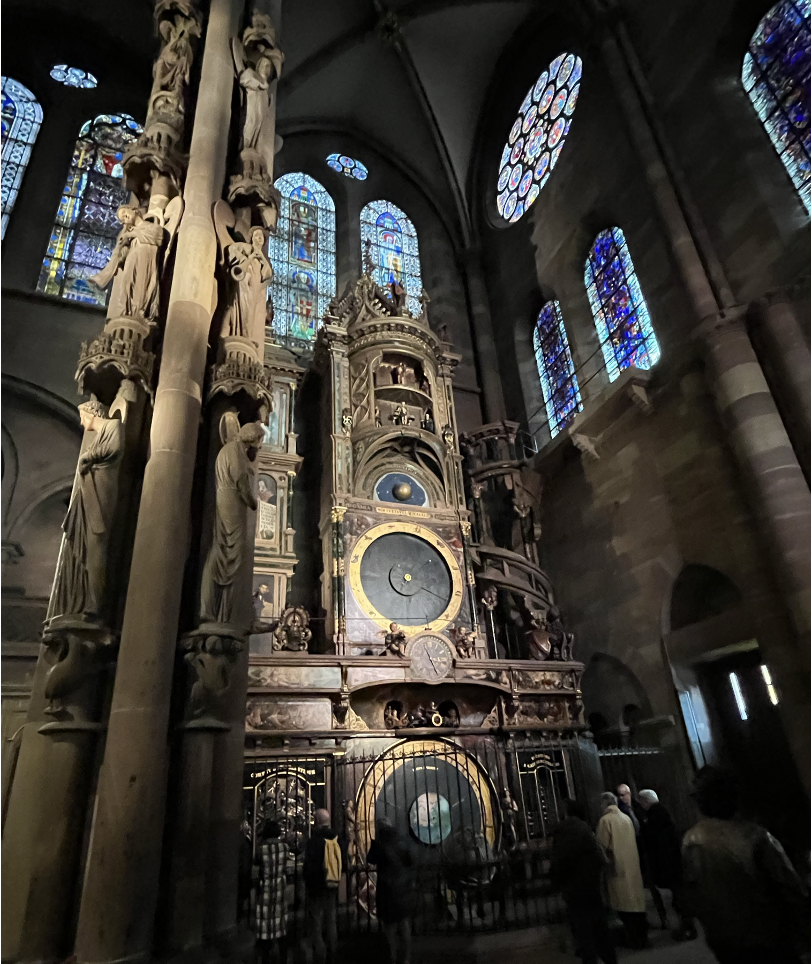STRASBOURG
A short history and places to visit
A short history
The Roman camp of Argentoratum was first mentioned in 12 BC. The city of Strasbourg celebrated its 2,000th anniversary in 1988. The fertile area in the Upper Rhine Plain between the rivers Ill and Rhine had already been populated since the Middle Paleolithic.
Between 362 and 1262, Strasbourg was governed by the bishops of Strasbourg. In 1262, the citizens violently rebelled against the bishop's rule and Strasbourg became a free imperial city. It became a French city in 1681, after the conquest of Alsace by the armies of Louis XIV. In 1871, after the Franco-Prussian War, the city became German again, until 1918 (end of World War I), when it reverted to France. Strasbourg was captured by the German army in June 1940 and subsequently came under German control again. Since the liberation of the city in November 1944, it has again been a French city. In 2016, Strasbourg was promoted from capital of Alsace to capital of Grand-Est.
Strasbourg played an important part in the Protestant Reformation, with personalities such as John Calvin, and Reverence for Life, with Albert Schweitzer. It was also one of the first centres of the printing industry with pioneers such as Johannes Gutenberg and Johann Carolus. Among the darkest periods in the city's long history were the years 1870 (Siege of Strasbourg) and the years 1940–1944 with the Nazi occupation and the British and American bombing raids.
Strasbourg's historic city centre, the Grande Île (Grand Island), was classified a World Heritage Site by UNESCO in 1988, with the newer "Neustadt" being added to the site in 2017.
Strasbourg is immersed in Franco-German culture and although violently disputed throughout history, has been a cultural bridge between France and Germany for centuries, especially through the University of Strasbourg established in 1538, currently the second-largest in France. 18 Nobel Prizes have been awarded to professors or students of the university like Wilheml Röntgen, Max von Laue, Albert Schweitzer, Pieter Zeeman, Louis Néel, Jean-Marie Lehn, Jean-Pierre Sauvage…
Strasbourg has been the seat of European institutions since 1949: first of the International Commission on Civil Status and of the Council of Europe, later of the European Parliament, of the European Science Foundation, and others as well.
Places to visit
The Strasbourg Cathedral
The cathedral is the landmark of the city and is visible miles away. Building was initiated during the 13th century. The 142m tower completed in 1459 was the highest man-made building until 1874. It is a prime example of the evolution of the architecture along the time because the choir is typically of Roman style while the façade is of late Gothic style. You may spend hours looking at the many statues and stained-glass windows.
Front view of the cathedral at night
Among the highlights of the cathedral is the astronomical clock. Its main features, besides the automata, are a perpetual calendar, a planetary dial, a display of the real position of the Sun and the Moon, and solar and lunar eclipses. The main attraction is the procession of the Christ and the Apostles at 12:00 am. Tickets must be purchased for the same day at the ticket counter inside the cathedral. The number of places is limited hence it is recommended to buy the tickets at opening time at 10:00 am.
One of the rooms at Palais Rohan
The astronomical clock and the pillar of the angels
Close to the cathedral you may want to visit the Palais Rohan de Strasbourg built between 1732 and1742. Designed to resemble one of the great Parisian mansions, the Strasbourg's episcopal palace is one of the finest architectural creations of the 18th century in France, thanks to both the noble classical elevations of its façades and to the sumptuous interior decoration. The palace also hosts the Fine Arts museum and the Archaelogical museum.
Strasbourg is rich of many other museums: https://en.musees.strasbourg.eu/museums
One of them is the Museum Oeuvre Notre-Dame close to the cathedral with people interested in Middle Age and Renaissance architecture:
https://en.musees.strasbourg.eu/museum-oeuvre-notre-dame
A lovely area in Strasbourg is the Petite France:
https://www.visitstrasbourg.fr/en/discover/must-see-attractions/the-petite-france/


